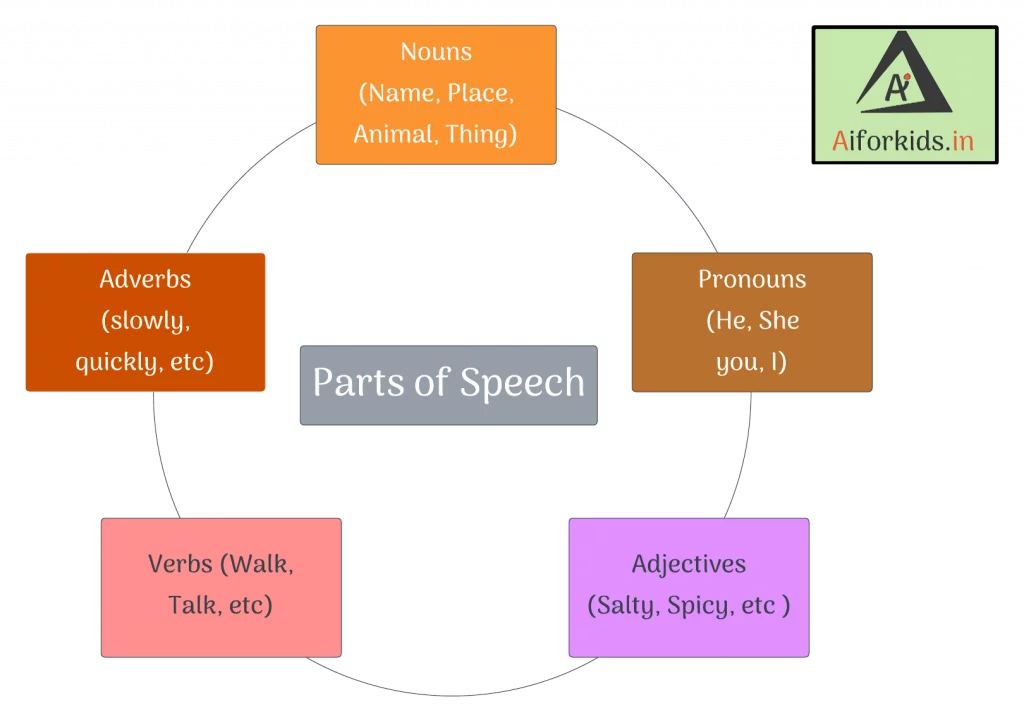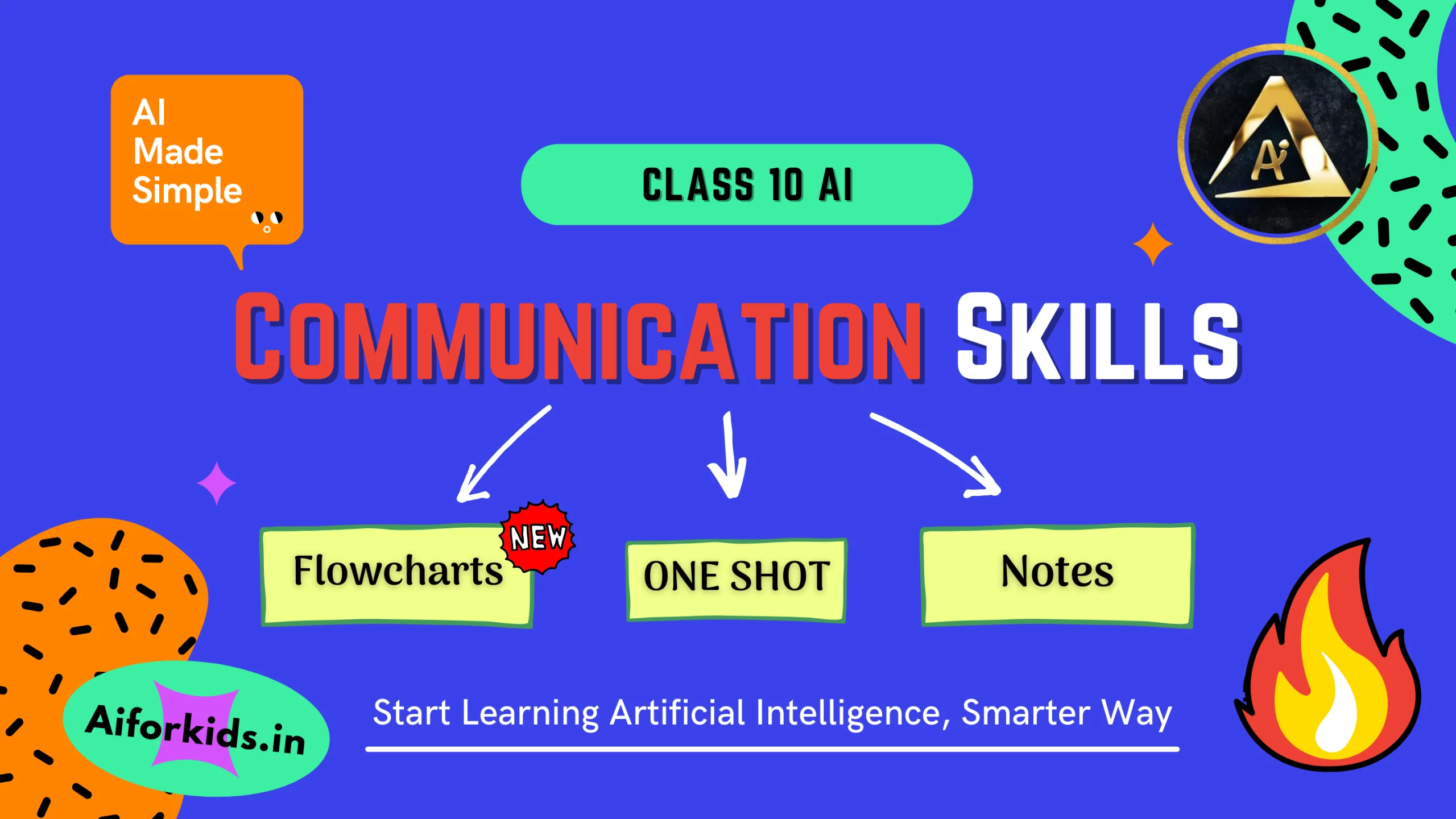Communication Skills Class 10 Employability Skills Artificial Intelligence, Based on the CBSE Curriculum, Explores the different ways of communication, types, and methods.
The barriers to communication and ways to overcome them, the feedback, and writing skills. All Combines give an immersive learning experience to enhance communication skills.
Table of Content
hideDefinition of Communication
The imparting or exchanging of information by speaking, writing, or using some other medium and means of sending or receiving
information. (Source: CBSE)
OR (Simplified)
The exchange of information between the sender and receiver with the help of a medium is known as Communication.
Methods of Communication
Flow Chart of Communication
Origin: The word ‘Communication’ comes from the Latin word commūnicāre, meaning ‘to share’.
Clear and concise communication is of immense importance in the work and business environment as there are several parties involved.
Various stakeholders, like, customers, employees, vendors, media, etc., are always sending important information to each other.
Communication has three Important Parts:
| Barrier | Meaning |
|---|---|
| Transmitting | The Sender sends (transmits) the message through one medium or another. |
| Listening | The Reciever listens or understands the Message |
| Feedback | The Reciever conveys their understanding of the message to the sender in the form of feedback to complete the communication cycle |
Communication Process and Elements
The Different Elements of a communication cycle are:
- Sender: the person beginning the communication.
- Message: the information that the sender wants to convey.
- Channel: the means by which the information is sent.
- Receiver: the person to whom the message is sent.
- Feedback: the receiver’s acknowledgment and response to the message.

Methods of Communication:
- Face-to-face informal
- It helps the message to be understood Clearly and Quickly
- Since body language can be seen in this case; it adds to the effectiveness of the communication.
- E-mail
- Can be used to communicate quickly with one or many individuals in various locations.
- It offers flexibility, convenience, and low-cost
- Notices/Posters
- It is effective when the same message has to go out to a large group of people.
- Generally used where email communication may not be effective.
- Ex: “Change in the lunchtime for factory worker”
- Business Meetings
- Generally addressed to a group of people.
- Can be related to business, management, and organizational decisions.
- Other Methods
- Social networks, messages, phone calls for communication, newsletter, blog, etc
Choosing the right method of communication depends on:-
- Target audience
- Costs
- Kind/type of information
- Urgency/priority
The methods of communication you choose could affect your relationship with peers, supervisors, and customers.
It is, therefore, vital that you spend considerable time and consider all factors in choosing the right methods to aid you in your tasks
Learning Objectives of Effective Communication
- Development of Interpersonal Skills
- To express effectively & with maximum efficiency
Verbal Communication
Verbal communication includes sounds, words, language, and speech.
Speaking is one of the most effective and commonly used ways of communicating. It helps in expressing our emotions in words.
By improving your verbal communication skills you will build rapport and have a better connect
Types of Verbal Communication
Interpersonal Communication:
- This form of communication takes place between two individuals and is thus a one-on-one conversation. It can be formal or informal.
- Examples:
- A manager discussing the performance with an employee.
- Two friends discussing homework, etc
Written Communication:
- This form of communication involves writing words. It can be letters, circulars, reports, manuals, SMS, social media chats, etc. It can be between two or more people.
- Examples:
- A manager writing an appreciation e-mail to an employee
- Writing a letter to grandmother enquiring about health.
Small-Group Communication:
- This type of communication takes place when there are more than two people involved. Each participant can interact and converse with the rest.
- Examples:
- Press conferences
- Board meetings
- Team meetings
Public Communication:
- This type of communication takes place when one individual addresses a large gathering.
- Examples:
- Election campaigns
- Public speeches by dignitaries
Advantages of Verbal Communication
Given below are the advantages of Verbal Communication:-
- It is an easy mode of communication in which you can exchange ideas by saying what you want and get a quick response.
- Verbal communication also enables you to keep changing your interaction as per the other person’s response.
Disadvantages of Verbal Communication
Since verbal communication depends on written or spoken words, sometimes the meanings can be confusing and difficult to understand if the right words are not used
Mastering Verbal Communication
Most people tend to get nervous while speaking in front of a large group, or even while speaking to their teachers, managers, or supervisors
Focusing on the following points can help you to enhance and master your verbal communication skills.
| Point | Description |
|---|---|
| Think Before You Speak | 1. Think about your topic. 2. Think about the most effective ways to make your listeners |
| Concise and Clear | 1. Speak clearly, loudly, and at moderate speed. 2. Be sure the information you want to share is to the point. 3. Do not repeat the same sentences. |
| Confidence and Body Language | 1. Be confident. 2. Maintain eye contact, stand straight and be attentive. 3. Be friendly |
Non-verbal Communication
Definition: Non-verbal communication is the expression or exchange of information or messages without using any spoken or written word.
Here, we send signals and messages to others, through expressions, gestures, postures, touch, space, eye contact, and paralanguage.
Importance of Non-verbal Communication
In our day-to-day communication:
- 55% of communication is done using body movements, face, arms, etc.
- 38% of communication is done using voice, tone pauses, etc.
- Only 7% of communication is done using words.
Types of Non-verbal Communication
1. Facial Expressions
| Meaning | Our expressions can show different feelings, such as Happiness, Sadness, Anger, Surprise, Fear, etc |
| Effective Usage | • Smile when you meet someone. • Keep your face relaxed. • Match your expressions with your words. • Nod while listening. |
2. Posture
| Meaning | Postures show our confidence and feelings. For example, a straight body posture shows confidence while a slumped posture is a sign of weakness |
| Effective Usage | Keep your shoulders straight and body relaxed. • Sit straight while resting your hands and feet in relaxed position. • While standing, keep your hands by your sides. |
3. Gesture or Body Language
| Meaning | Gestures include body movements that express an idea or meaning. For example, raising a hand in class to ask a question and biting nails when nervous. |
| Effective Usage | • Keep your hands open. • Avoid pointing your finger at people. • Tilt your head a bit to show that you are attentive. |
4. Touch
| Meaning | We communicate a great deal through touch. For example, a firm handshake to display confidence and pat on the back to encourage someone. |
| Effective Usage | Shake hands firmly while meeting someone. • Avoid another touch gestures during formal communication. |
5. Space
| Meaning | Space is the physical distance between two people. The space between tow persons while communicating, generally depends on the intimacy or closeness between them. |
| Effective Usage | • Maintain proper space depending on the relationship, which could be formal or informal or the closeness with the person with whom you are talking. |
6. Eye Contact
| Meaning | The way we look at someone can communicate a lot. Eye contact shows that we are paying attention to the person as opposed to looking away, which can make the other person feel ignored. |
| Effective Usage | • Look directly at the person who is speaking. • Avoid staring; keep a relaxed look. • Maintain eye contact with intermittent breaks. |
7. Paralanguage
| Meaning | How we speak affects our communication and includes the tone, speed and volume of our voice. For example, talking fast may show happiness, excitement or nervousness while speaking slow may show seriousness or sadness. |
| Effective Usage | • Use a suitable tone and volume • Maintain a moderate speed while talking |
Visual Communication
Visual communication proves to be effective since it involves interchanging messages only through images or pictures and therefore, you do not need to know any particular language for understanding it.
It is simple and remains consistent across different places.
A few Common types of visual communication are shown below:-
| Meaning | Information (Image) |
|---|---|
| Under construction |
|
| No pets allowed |  |
| No parking zone |  |
| No entry |  |
| Danger warning | 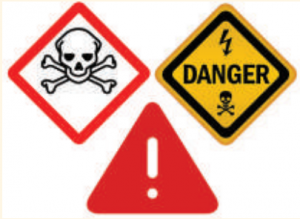 |
| Radiation/biohazard warning |
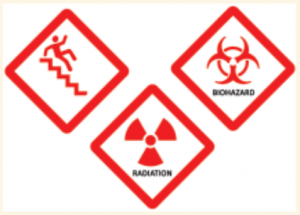 |
| Under CCTV surveillance | 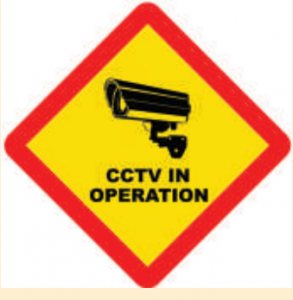 |
| No mobile phone | 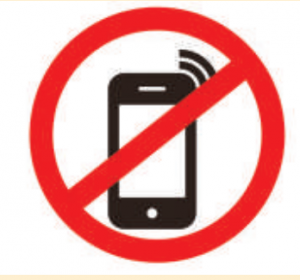 |
Communication Cycle and Importance of Feedback
Feedback is an important part of the communication cycle
For effective communication, it is important that the sender receives an acknowledgment from the receiver about getting the message across. While a sender sends information, the receiver provides feedback on the received message.
Feedback can be positive or negative
Types of Feedback
| Type | Example |
|---|---|
| Positive Feedback ✅ | Job finished perfectly. Good Job! |
| Negative Feedback ❌ | Please smile when you talk to hotel guests |
| No Feedback 🚫 | It is also a feedback in itself which indicates disagreement of ideas |
A Good Feedback is Always:-
- Specific
- Helpful
- Kind
Feedback, if shared properly, can help reinforce existing strengths and can increase the recipient’s abilities to rectify errors. It can have a long-term effect on managing and achieving goals.
Good feedback is one that is:
- Specific: Avoid general comments. Try to include examples to clarify your statement. Offering alternatives rather than just giving advice allows the receiver to decide what to do with your feedback.
- Timely: Being prompt is the key, since feedback loses its impact if delayed for too long.
- Polite: While it is important to share feedback, the recipient should not feel offended by the language of the feedback.
- Offering continuing support: Feedback sharing should be a continuous process. After offering feedback, let recipients know you are available for support.
Importance of Feedback
Feedback is the final component and one of the most important factors in the process of communication since it is defined as the response given by the receiver to the sender.
Reasons why feedback is important:
- It validates effective listening: The person providing the feedback knows they have been understood (or received) and that their feedback provides some value.
- It motivates: Feedback can motivate people to build better work relationships and continue the good work that is being appreciated.
- It is always there: Every time you speak to a person, we communicate feedback so it is impossible not to provide one.
- It boosts learning: Feedback is important to remain focused on goals, plan better and develop improved products and services.
- It improves performance: Feedback can help to form better decisions to improve and increase performance.
Barriers to Effective Communication
What is Effective Communication?
There are different methods of communication: non-verbal, verbal, and visual.
However, all these methods can only be effective if we follow the basic principles of professional communication skills.
These can be abbreviated as 7 Cs i.e., Clear, Concise, Concrete, Correct, Coherent, Complete, and Courteous.
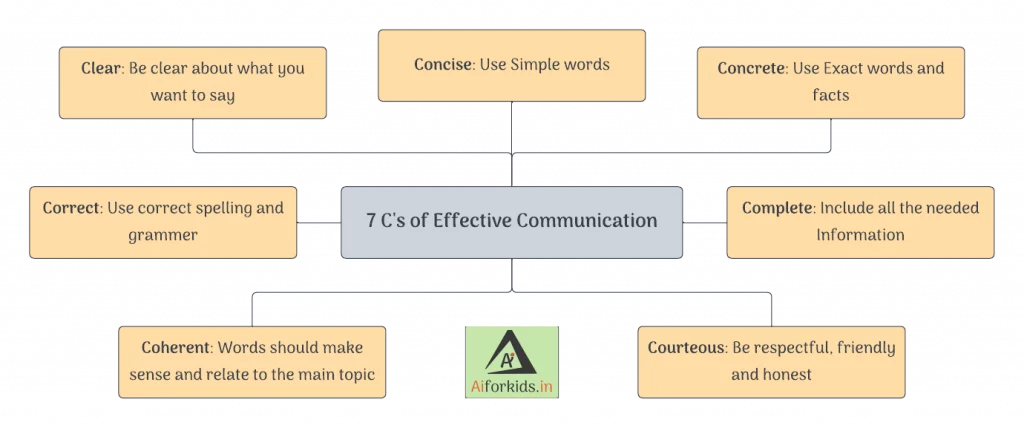
The Barriers to Effective Communication
There are many reasons for interpersonal communication to fail. This results in many issues, the message may not be received the way the sender intended and hence lead to miscommunication
⤏ Physical Barriers
Definition: Physical barrier is the environmental and natural condition that acts as a barrier to communication in sending a message from sender to receiver.
For example: text messages are often less effective than face-to-face communication
⤏ Linguistic Barriers
Definition: The inability to communicate using a language is known as a language barrier to communication. (The most common communication barriers)
Example: Slang, professional jargon, and regional colloquialisms can make communication difficult.
⤏ Interpersonal Barriers
Definition: When the sender’s message is received differently from how
it was intended. It becomes difficult to communicate with someone who is not willing to talk or express their feelings and views.
Example: Stage fear, lack of will to communicate, and personal differences can create interpersonal barriers to communication.
⤏ Organizational Barriers
Definition: Organizations are designed on the basis of formal hierarchical structures that follow performance standards, rules, regulations, procedures, policies, behavioral norms, etc. All these affect the free flow of communication in organizations.
Examples:
- Superior-subordinate relationships in a formal organizational structure can be a barrier to free flow of communication.
- Sometimes due to the stringent rules, the employees find it difficult to communicate with their peers too.
⤏ Cultural Barriers
Definition: Cultural barriers is when people of different cultures are unable to understand each other’s customs, resulting in inconveniences and difficulties.
Example: People sometimes make stereotypical assumptions about others based on their cultural background, this leads to differences in opinions.
Ways to Overcome Barriers to Effective Communication
- Use simple language
- Do not form assumptions on culture, religion or geography
- Try to communicate in person as much as possible
- Use visuals
- Take the help of a translator to overcome differences in language
- Be respectful of other’s opinions
Writing Skills — Parts of Speech
Writing skills are part of verbal communication and include e-mails, letters, notes, articles, SMS/chat, blogs, etc.
| Sentence | Phrase |
|---|---|
| A sentence is a group of words that communicates a complete thought | A group of words, which does not make complete sense, is known as a phrase |
| Example: Pooja goes to school. | Example: Pooja goes. |
Capitalisation
“MINTS” simple rule that helps you capitalise words correctly, Each letter in the word MINTS refers to one Capitalisation Rule.
- M (Months) : Capitalise the first letter in the names of days and months.
- I ( Word ‘I’) : Capitalise the letter ‘I’ when it is used as a word (Pronoun).
- N (Names) : Capitalise the first letter in the names of people, places.
- T (Titles) : Capitalise the first letter in the titles used before people’s names.
- S (Starting Letter) : Capitalise the first letter in every sentence.
Punctuation
Definition:
A certain set of marks, such as full stop, comma, question mark, exclamation mark, and apostrophes are used in communication to separate parts of a sentence for better clarity of message are called Punctuation Marks.
➡️ List of Important Punctuation Marks:
Full Stop (.) :
- Used at the end of a sentence
- Used with the short form of long words.
- Example: Omar is a professor. His students call him Prof. Omar.
Comma (,)
- Used to indicate a pause in the sentence.
- Used to separate two or more items in a row.
- Example: Before walking away, Lalit waved his hand.
Question Mark (?)
- Used at the end of a question.
- Example: Where is your book?
Exclamation Mark (!)
- Used at the end of a word or a sentence to indicate a strong feeling.
- Example: What a beautiful dress!
Apostrophe (‘)
- Used followed by an ‘s’ to show possession or belonging.
- Used with a shortened form of words in informal speech.
- Example: That is Laado’s cat. OR He isn’t coming today.
Basic Parts of Speech
The part of speech indicates how a particular word functions in meaning as well as grammatically within the sentence.
Some examples are nouns, pronouns, adjectives, verbs, and adverbs.
